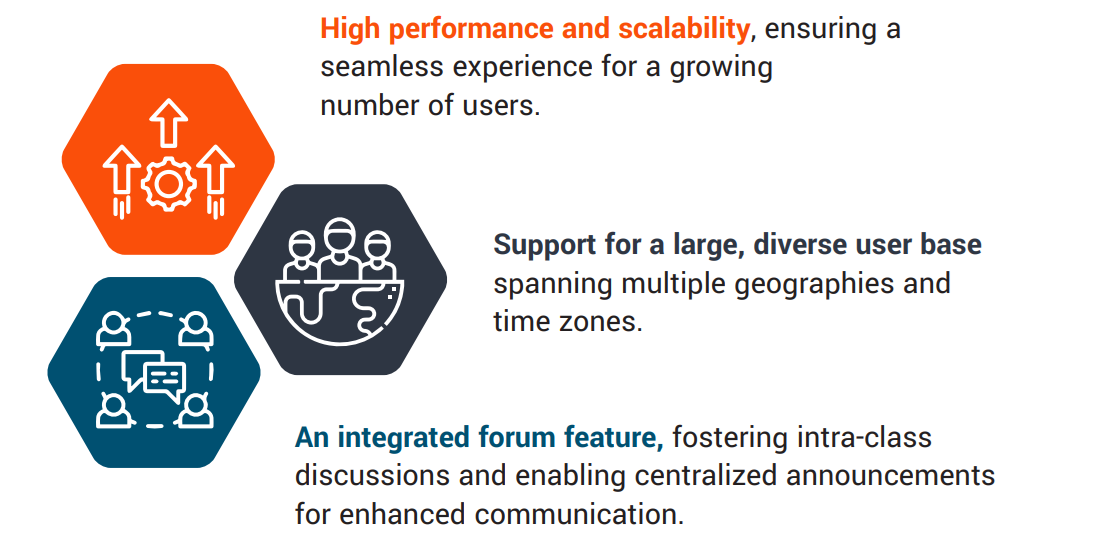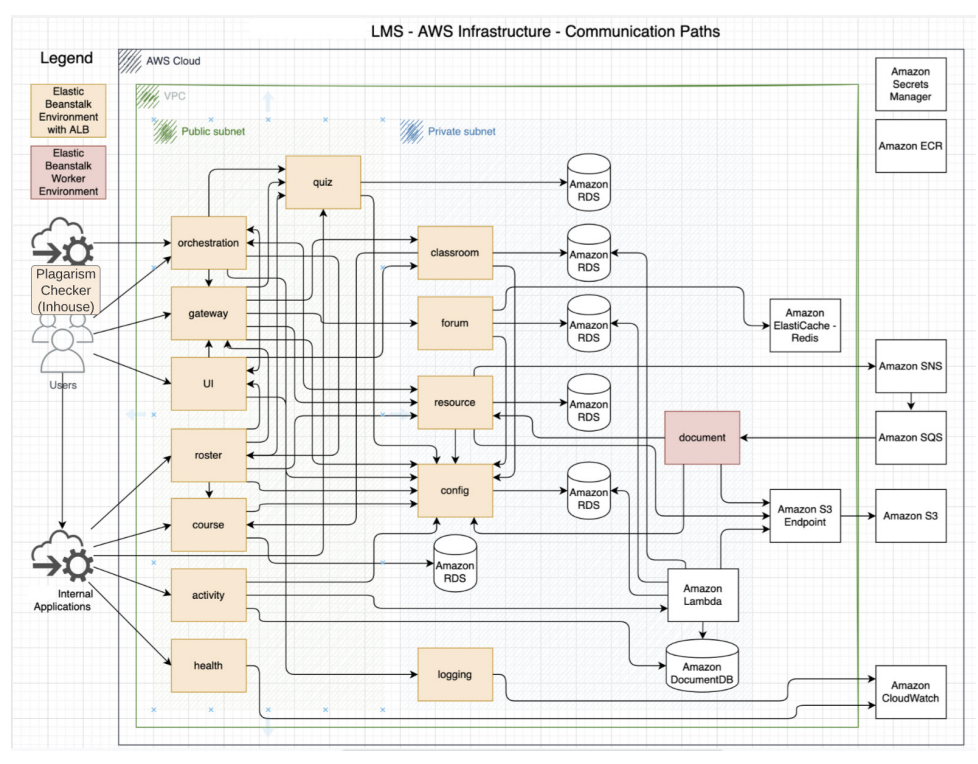Next-Gen Learning: Transitioning to a Scalable LMS for a Superior, Global Educational Experience
The Customer
A leading US university faced growing challenges with its legacy Learning Management System (LMS). These issues hindered its ability to support a global user base across multiple time zones and provide modern collaborative tools.
The Challenge
The legacy system had limitations in terms of scalability to meet the growing user base and affiliations with other schools, as well as restrictions in integrating with external services and third-party vendors.
To address these challenges, the university set out to implement a modern LMS that offers:

The Solution
A cloud native LMS hosted on AWS using a myriad of managed services. Key aspects of the solution include:
- Elastic Load Balancing (ELB): Effectively distributes incoming traffic across multiple servers to maintain seamless operations, even during peak loads such as exams or live classes.
- Auto Scaling: Dynamically adjusts computing resources to match traffic demands, ensuring the system remains responsive regardless of user spikes.
- Amazon S3: Provides scalable, cost-effective, and durable storage for hosting large volumes of educational content, including multimedia resources and course materials.
- Amazon RDS: Ensures high availability and superior performance of the LMS databases, supporting millions of queries with low latency.
- AWS Dynamo DB: NoSQL database for notifications and alerts to keep the users notified on class activities.
- AWS Lambda: Facilitates serverless computing for executing custom integrations, automating workflows, and handling event-driven tasks efficiently.
- AWS API Gateway: Simplifies the creation and management of APIs to seamlessly connect the LMS with external systems, third-party vendors, and other educational tools.
- GraphQL with Apollo API Gateway: Enables flexible and efficient querying of data, improving system performance and delivering a better user experience for students and educators.
- Terraform: Implements Infrastructure-as-Code (IaC) to create consistent and reproducible environments across production and non-production setups. This approach minimizes manual intervention and errors.
- CI/CD Pipelines: Automated Continuous Integration and Continuous Deployment pipelines ensure streamlined and consistent code releases, reducing deployment times and minimizing downtime.
- CloudWatch Monitoring and Alerting: Provides real-time infrastructure monitoring and alerting, enabling proactive issue resolution to ensure uninterrupted service delivery.
- Playbooks and Runbooks: Comprehensive guides created for the Managed Services team to troubleshoot and resolve issues efficiently, often without the need for escalation.
- Containerization: Leveraged Docker containers to ensure application consistency, portability across environments, and simplified deployments.
By leveraging AWS’s comprehensive ecosystem, the client was able to overcome the challenges and deliver a robust, scalable, and user-friendly learning experience.
The Solution Architecture

The Business Result
The system overhaul delivered impactful outcomes:
- 75% faster startup times, enabling rapid scalability.
- Support for 90,000 classes and 25,000 concurrent users, serving a user base of 175,000.
- 100% feature parity in a multi-tenancy setup with simplified customization capabilities.
- 40% reduction in AWS costs and 68% decrease in per-student costs through Spot Instances and Auto Scaling, with seamless onboarding.
- Streamlined forum configurations and dashboard access for system health monitoring via AWS.
- Proactive downtime alerts and fast issue resolution, ensuring minimal disruption for students and faculty
- Zero downtime during feature rollouts and code deployments.
- Enhanced user experience: “It felt like I was taking a class in 2032” – student feedback.
